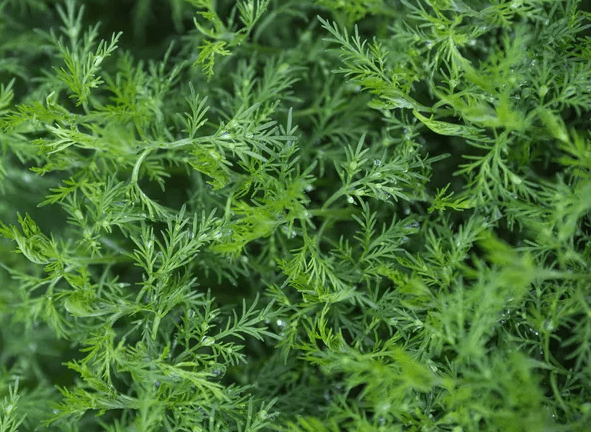
Description
Artemisia abrotanum is a species of flowering plant in the sunflower family that goes by many names, including southern wormwood, lad’s love, and southern wood. Southernwood was traditionally employed as an air freshener or strewing plant because of its potent camphor-like scent. It grows into a compact, bushy shrub that many gardeners love. The thin, narrow, feathery leaves are a gray-green color. The tiny blooms are yellow in color.
Habitat
Although it originated in Africa and Eurasia, it has naturalized in a few places in North America.
Varieties
Southernwood exists in various types, such as:
Artemisia abrotanum ‘Cola’: The leaf of this cultivar genuinely has a soda scent.
Leprechaun, or Artemisia abrotanum, is a particularly resilient and compact cultivar.
Artemisia abrotanum ‘Silver’: The delicate foliage of this cultivar is silvery-green in color.

Plant Care
- Light
Southernwood can grow well in some shade, but it loves full sun, which is defined as at least six hours of direct sunlight on most days. Simply put, there won’t be as much robust growth and less of the plant’s citrus aroma. Excessive shadow can also make the leaves appear less scraggly and compact.
- Soil
Depending on the pH of the soil, southernwood can thrive in clay, loamy, or sandy conditions. The plant is prone to root rot, therefore the soil needs to drain properly and never become wet.
- Water
Southernwood is a drought-tolerant species that thrives in dry or slightly damp environments after it has established itself. It dislikes having its roots overwatered. Water the soil to keep it from drying out in hot weather or during an extended dry spell. If not, more irrigation is frequently not required.
- Temperature and Humidity
Southernwood is more likely to live longer, be harder, and have a stronger scent in hot, dry climates. It’s not appropriate for the Deep South’s hot and muggy environment, despite its name. Although the plant can withstand lower temperatures, in the colder regions of its growth zones, it will benefit from mulching during the winter. The plant is more likely to produce flowers in hotter climates. Typically, the blossoms won’t show up at all in the cooler areas.
- Fertilizer
Southernwood may not require additional fertilizer feeding because it may grow in barren soils. If the foliage appears weak and extended, and the plant is losing its compact shape, it may be time to feed it. For a springtime boost in organic nutrients, incorporate some compost into the soil.
Table





